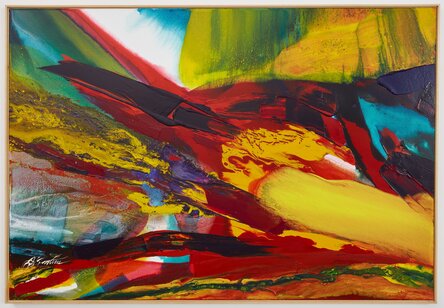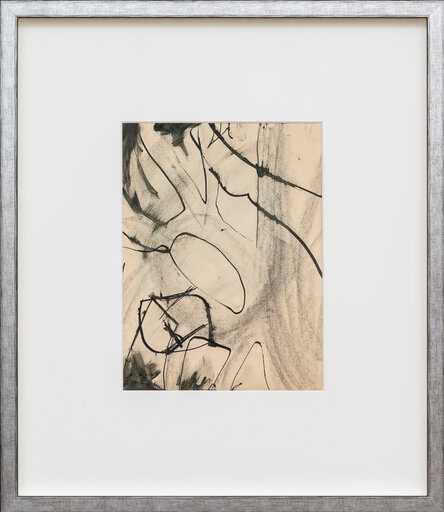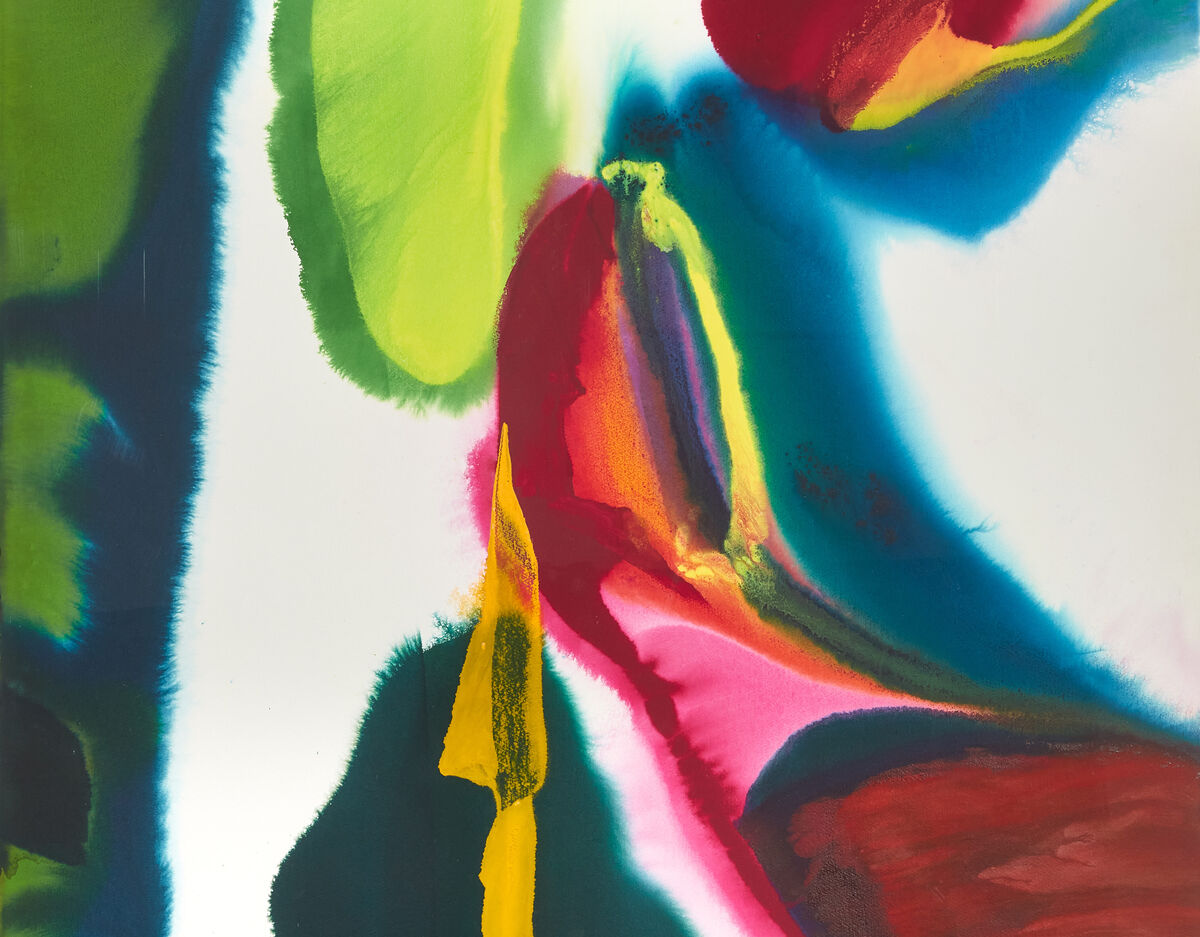
Action and Geometry: Beck/Jenkins | LeWitt/Tremlett
‘Action and Geometry’ unites Julian Beck, Paul Jenkins, Sol LeWitt, and David Tremlett, who share a deep engagement with movement, structure, and space. Presenting two conceptual dialogues, the exhibition juxtaposes the expressive dynamism of Beck & Jenkins with the systematic precision of LeWitt & Tremlett, highlighting the interplay between intuition and structure across two movements that have shaped the landscape of art history; Abstract Expressionism and Minimalism.
'Action and Geometry: Beck/Jenkins LeWitt/Tremlett' elucidates the ongoing negotiation between dynamism and order, chance and system, as successive generations of artists engage with and reinterpret established legacies.
This exhibition orchestrates a dialogue between two artistic generations, tracing their engagement with the defining currents of Abstract Expressionism and Minimalism within a broader historical and theoretical framework.
At the heart of American Abstract Expressionism lies a dialectic between spontaneity and control—a charged dynamic embodied in distinct ways by Julian Beck and Paul Jenkins. Beck’s 1945 pastel and watercolour painting exudes a gestural intensity, reflecting his theatrical sensibility, while Jenkins’ Phenomena series (2005, 2007) achieves a radiant fluidity through his controlled manipulation of pigment. Though both artists embrace movement and improvisation, their divergent techniques and conceptual approaches articulate a shifting perception of action in painting across generations.
In parallel, the exhibition places Sol LeWitt in dialogue with David Tremlett, examining the evolution of geometric and spatial considerations within the two-dimensional plane. A rare LeWitt gouache (1985) and a signed print (1986) are juxtaposed with two of Tremlett’s latest works, foregrounding a lineage of inquiry into form, perception, and materiality.
This pairing also serves to acknowledge the deep intellectual and personal connection between LeWitt and Tremlett, who collaborated extensively, most notably in the creation of wall drawings at LeWitt’s residence in Spoleto, Italy. There, Tremlett extended LeWitt’s rigorously structured compositions through his own hand-applied pigment, merging systematic precision with an instinctive sensitivity to space. Their exchange reveals a conceptual dialogue in which geometric clarity coexists with an embodied understanding of place.
'Action and Geometry: Beck/Jenkins LeWitt/Tremlett' elucidates the ongoing negotiation between dynamism and order, chance and system, as successive generations of artists engage with and reinterpret established legacies. By collapsing temporal and disciplinary boundaries, this presentation offers a lens through which to reconsider the evolution of painterly language and its capacity to trace the mutable trajectories of artistic movements over time.
To schedule an appointment for an in-person viewing please email [email protected]
Julian Beck (1925–1985, USA)
Beck is well known for co-founding The Living Theatre, an experimental performance collective that bridged art and activism. Beck’s prominence as a first-generation Ab-Ex was solidified during his inclusion in Peggy Guggenheim’s ‘Art of This Century’ gallery where he exhibited alongside luminaries Jackson Pollock, Robert Motherwell and more. Beck’s work engaged with the raw physicality of mark-making and mirrored the spirited and gestural force that characterised much of the movement.
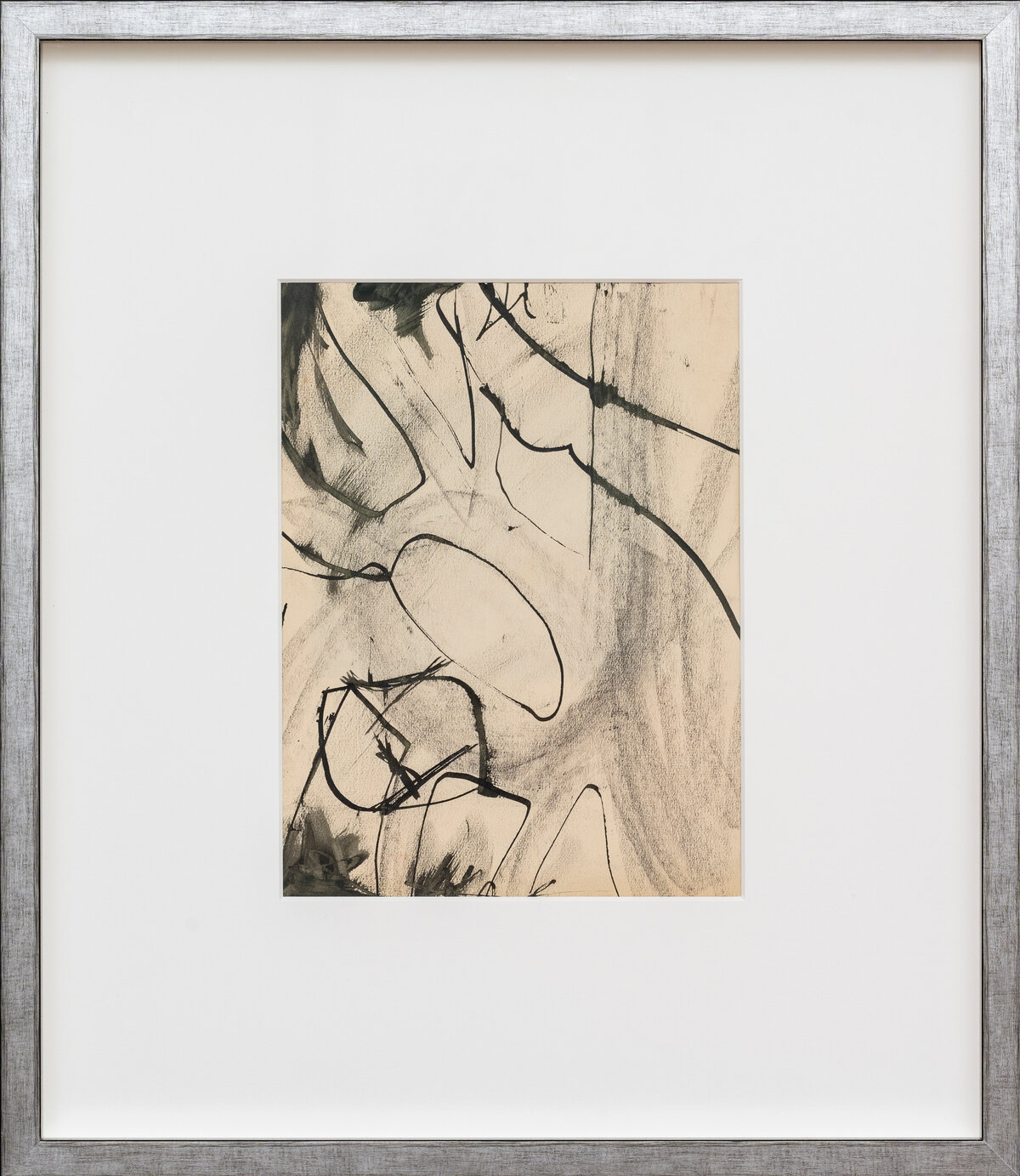
Untitled, 1945, Pastels and watercolour on paper, Framed: 56 x 48.5 cm | 22 x 19 1/8 in
Paul Jenkins (1923–2012, USA)
While engaged by the action painting techniques of his predecessors, Jenkins worked outside of gestural abstraction through his signature technique of controlled paint flow—manipulating poured pigment with an Inuit ivory knife rather than a brush—creating luminous, layered compositions that balanced spontaneity with a deep sense of control. This apparent absence of the artist's gestural mark upholds Jenkins' self-labelled title as an 'Abstract Phenomenist'.

'Phenomena Lasting Sound', 2005, Acrylic on canvas, 130 x 190.5 cm | 51.2 x 75 in
Sol LeWitt (1928–2007, USA)
If Abstract Expressionism was defined by the tension of action and spontaneity, Minimalism sought a counterpoint in structure and conceptual rigour. Sol LeWitt, a founder of Minimalism, believed that art should be rooted in predetermined systems, with the execution of a work often separated from its conceptual framework. His wall drawings, composed of precise geometric patterns, redefined the role of the artist’s hand, shifting emphasis to the underlying idea rather than the act of making.
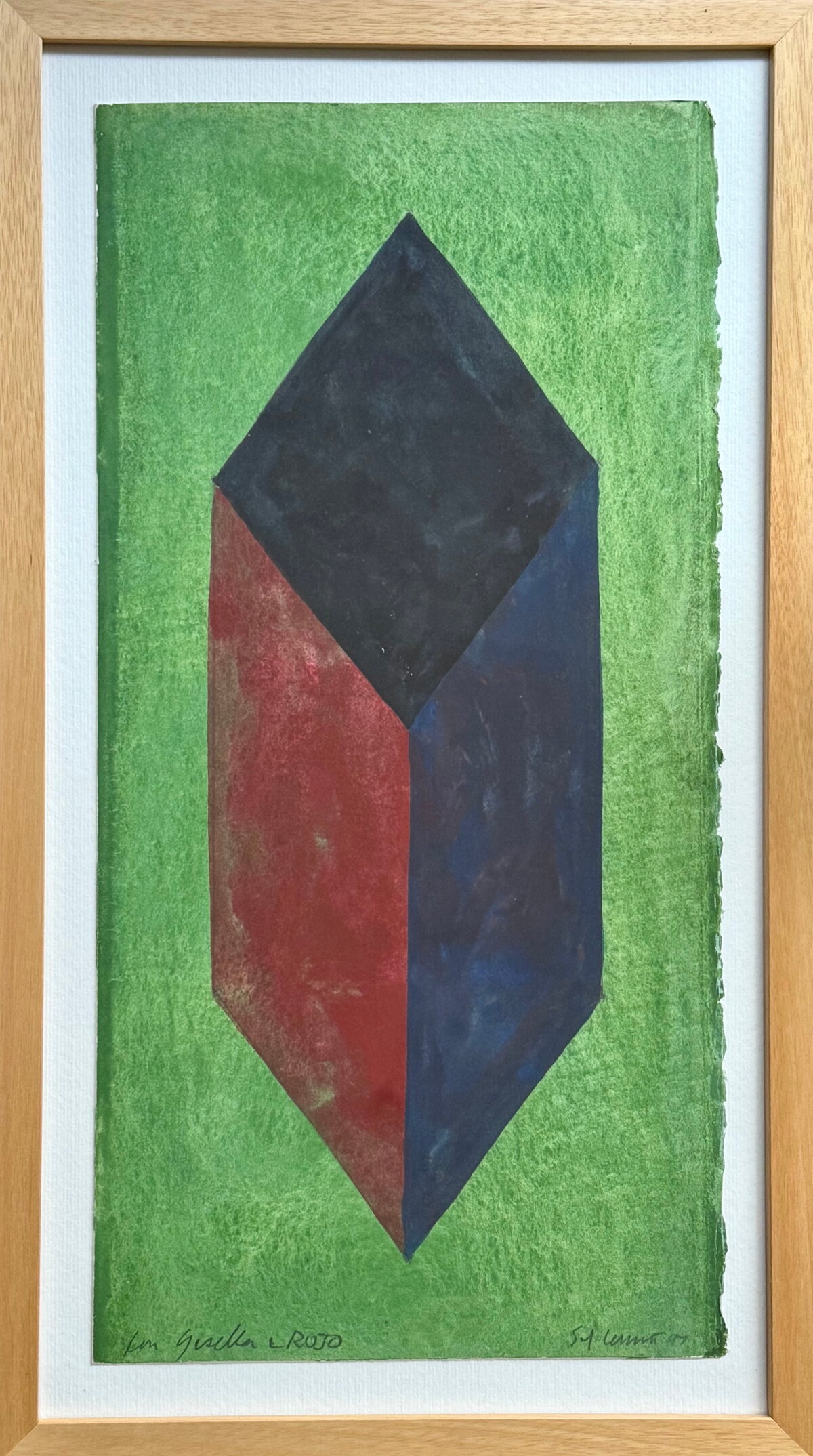
Untitled, 1985, Colour Ink Wash, 15 × 7 7/10 in | 38 × 19.5 cm
David Tremlett (b. 1945, UK)
As a sculptor, installation artist, and photographer, Tremlett's work expands beyond the original tenets of Minimalism to embrace colour, materiality, and site-specificity. He is renowned for his large mural drawings featuring abstract and geometric designs made with coloured pastels. Informed by his international travels where he encountered diverse geometries in architecture, he developed compositional structure in his work to simultaneously amplify colour and explore spatial relationships.
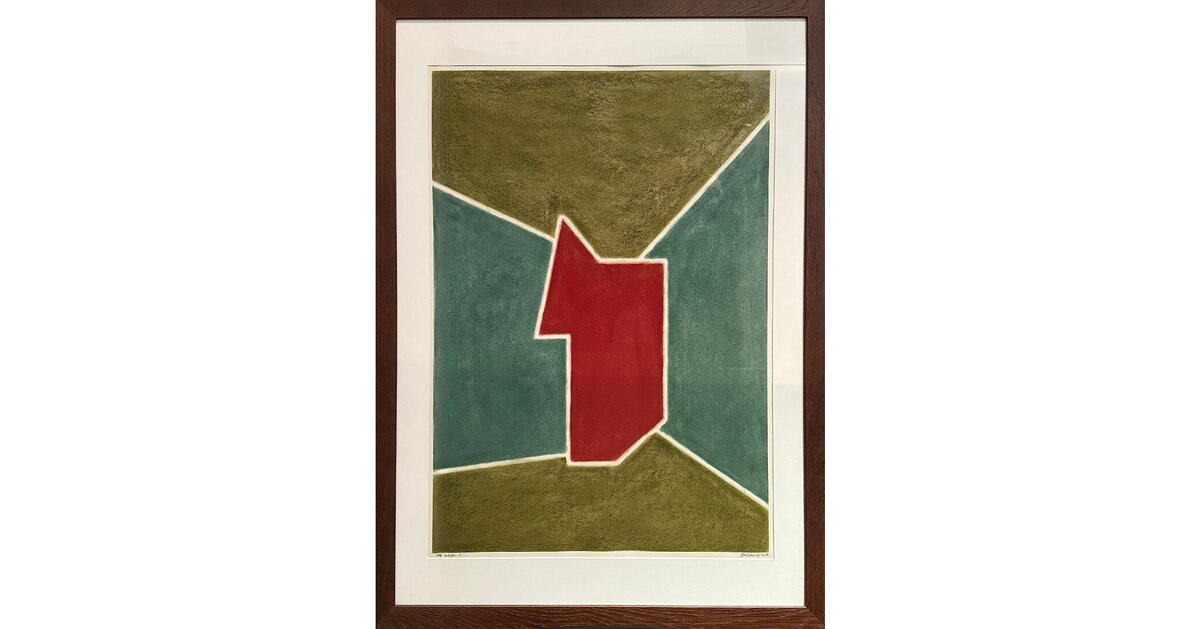
'Red Octagon 2', pastel on paper 33 1/10 × 23 2/5 in | 84.1 × 59.4 cm
